
An exhibition dedicated to the Centennial of Maserati will be held at the Enzo Ferrari Museum in Modena, Italy through January 2015. The “Maserati 100 – A Century of Pure Italian Luxury Sports Cars” display retraces the story of the Italian car manufacturer through an exhibition featuring some of the Trident marque’s most significant road and racing cars. The exhibit also offers an engaging show employing 19 projectors, enabling visitors to relive moments in the history of Maserati and to learn about the individuals who shaped the company.
Staged in the Enzo Ferrari Museum, a stone’s throw from the Maserati headquarters in Viale Ciro Menotti, the exhibition will run until January 2015. Considering the historic value of the models exhibited, Maserati called the gathering the greatest exhibition of Maserati cars ever staged.
The June 19, 2014 inauguration of the new exhibition was attended by the CEO of Maserati, Harald Wester, and the Chairman of Ferrari, Luca Cordero di Montezemolo. They were joined by the cousins Carlo and Alfieri Maserati, sons, respectively, of Ettore and Ernesto Maserati, the two brothers who in 1914, together with Alfieri Maserati, founded the company that still bears their name today. The guest of honour at the inauguration was the legendary Sir Stirling Moss, the 1950s Maserati racing driver who scooped incredible victories for the Trident marque. The curator of the exhibition is Adolfo Orsi jr., grandson and son of Adolfo and Omer Orsi, owners of Maserati between 1937 and 1967. The exhibition is organised under the supervision and direction of Antonio Ghini, director of MEF and of the Ferrari Museum in Maranello.
Twenty-one Maseratis will be on permanent display for the duration of the exhibition and a total of approximately 30 will be admired over the course of the six-month run. Ten or so cars will be exhibited on a rotation basis, allowing them to take part in the countless events being staged across the globe to mark the Maserati centenary in the coming months. In keeping with the exhibition venue, which is dedicated to Enzo Ferrari as it was the birthplace of the legendary Modena-born car manufacturer, visitors will also have the opportunity to see rare Ferrari models and the most important Alfa Romeo racing cars of the pre-war period which were driven by Ferrari or entered in international competitions by the racing stable that still bears his name today. This part of the exhibition is located in the large workshop, where Enzo’s father worked from the end of the 19th Century until his death, which today houses the extension to the Museum’s exhibition space.

The choice of which cars to exhibit fell to the exhibition curator, Adolfo Orsi, who explained his selection criteria, “In the difficult choice between the countless models, both racing and road-going, that have shaped the long history of Maserati, I tried to imagine ‘the dream garage’ of every car enthusiast, selecting not only the best in terms of engineering and style, but also the most important and historically significant examples of each model. I was fortunate to find an amazing spirit of collaboration on the part of dedicated collectors, who very generously agreed to lend their vehicles, some of which have been flown here from the other side of the Atlantic as they are virtually impossible to find in Europe.”
The Maserati exhibition encapsulates the two spirits of the company — the initial “sports” vocation that characterised the period from the early 1920s until the end of the 1950s, followed by a shift in focus to road-going models, a period that testified to the company’s coming-of-age as a car manufacturer.
Among the highlights of the exhibition are cars like the Tipo 26, the first car to sport the Maserati marque; and the V4 Sport Zagato, which set the world speed record in 1929 driven by Baconin Borzacchini. It was re-bodied in 1934 by Zagato and is a recent winner at the Concorso d’Eleganza at Villa d’Este. The exhibition would not have been complete, of course, without the legendary Maserati 250 F – winner of the Formula 1 World Championship with Juan Manuel Fangio in 1954 and in 1957, the year when the Argentine ace triumphed after a fantastic comeback in the epic German Grand Prix at the Nürburgring circuit.
Stirling Moss, who attended the inauguration, drove this particular racing car to some of his greatest ever victories, for example in the Italian and Monaco Grand Prix races of 1956. And of course it would be unforgivable not to mention the Tipo 60 “Birdcage”, another of the cars driven by Moss. This two-seater sports racing car with front-mounted engine, an ingenious Italian response to ever-evolving chassis for racing cars, was produced by welding together dozens of slender metal tubes to guarantee a rigid yet lightweight chassis. Used on the track by a number of private racing teams, it brought fame and prestige to Maserati with numerous wins from 1959.
The road cars on show include one model which, although produced only in limited numbers and still in a rather artisan manner, constituted Maserati’s first road car: the A6 1500 of 1947 bodied by Pinin Farina and built around a racing engine. This was a first attempt, a sort of general rehearsal, which hinted at the future of the Modena company. Taking a chronological leap forward, we find the 3500 GT of 1957: the first granturismo. This was the forerunner to other important Maserati coupe and spider models destined to earn a place in the automobile history books. And then there is the first series of the “world’s fastest saloon,” the Quattroporte of 1965 once owned by Italian actor and Federico Fellini favourite Marcello Mastroianni.
For additional information, visit Enzo Ferrari Museum.
[Source: Maserati]



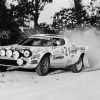
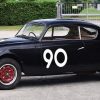
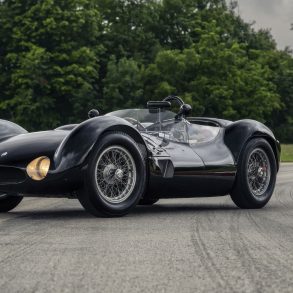



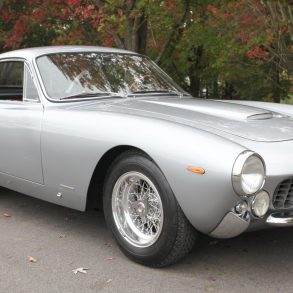
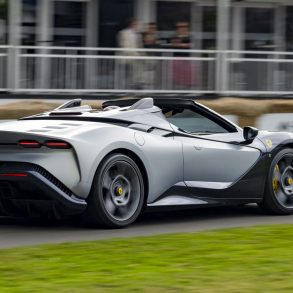

Very beautiful show.